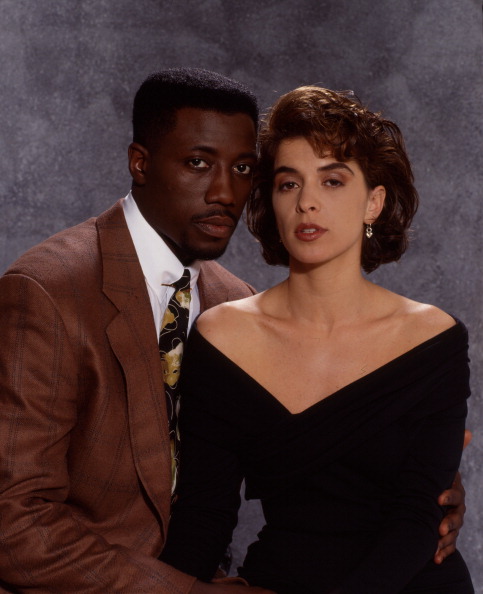
Source: Anthony Barboza / Getty
Back in 1991, self-proclaimed “Black-nationalist with a camera” Spike Lee released Jungle Fever — a film that depicted the complications of a Black lawyer’s affair with his white secretary. In its essence, the film showcased the tumultuous realities that can come with interracial dating. This week’s throwback thought aims to explore the legacy of the film as it coincides with how Black women relate to the term jungle fever, and discusses the increasing amount of interracial relationships starring Black women happening in contemporary television and film.
Obviously, Lee didn’t come up with the term “jungle fever,” and he wasn’t the first person to portray the dynamics of interracial romance between a Black and white person in film. Historically, they often depicted a Black man and a white woman at the center of the drama, and films like Birth of a Nation and Guess Who’s Coming to Dinner — albeit very different from each other — stand out most prominently. Even though the origins of the term jungle fever aren’t known, the combination of the phrase speaks to its roots in colonialized ideology that inherently places the Black person within that relationship as a primitive, savage, and unsophisticated “other.”
Especially as it relates to Black women, the term lends itself as a reference to the hypersexualized view of us always being “in heat.” Overall, while it isn’t so widely used anymore, the desire to date interracially that jungle fever expresses — and the complications of it — are still very real for Black women today. A few years ago, Pew Research noted that “In 2015, 24% of recently married Black men were [interracially] compared with 12% of newly married Black women.” While on the surface that data might make it seem as though Black women are less likely to be interracially wed because the desire from some of us just isn’t there, further research has shown that other races being closed off to dating Black women is actually a better description of the situation. Pew’s data showed that the acceptance toward interracial dating has become more widespread across races overall from the 1990s when Lee’s film came out — but a study released by online dating site OkCupid in 2014 found that Black women (and Asian men) received some of the least amounts of matches when in comparison to other races, an issue Black women in the 1990s didn’t have to deal with in the way we do now.
In a piece published by Quartz in 2018, deputy editor Brianna Holt highlighted the influence TV and film might have on people’s preferences concerning who they’ll choose to date. While relationships in mainstream media are for the most part centered around whiteness — and/or interracial relationships like the one depicted in Lee’s film of a white woman and Black man at its core — things are changing.
Last year, The New York Times pointed out that depictions of Black women in interracial relationships — particularly those of darker skin tones — have increased within recent years. Molly (Black) started dating Andrew (Asian-American) in the HBO hit series Insecure. Relatedly, Issa Rae recently starred as Leilani (Black) alongside her love interest Kumail Nanjiani’s character Jibrani (assumed to be of Indian descent) in the movie The Lovebirds last year. The relationship between Lauren Speed (Black) and Cameron Hamilton (White) was a crowd favorite in Netflix’s highly binged Love Is Blind, and In ABC’s Mixed-ish, fictional parents Alicia (Black) and Paul (White) raise their three biracial kids in the 80s and their daughter Bow — who is the show’s protagonist — tackles the complexities of mixed-race identity (a result of her parent’s love) and being a teenager.
TV and media have come a long way from the stereotypes of the 90s and Jungle Fever’s depiction of interracial love. Now that Black women are increasingly being depicted in relationships with people outside of their race in television and film, do you think it’ll become any easier for the ones who want to interracially date in real life?


